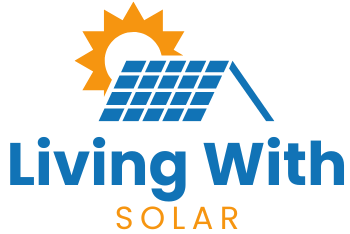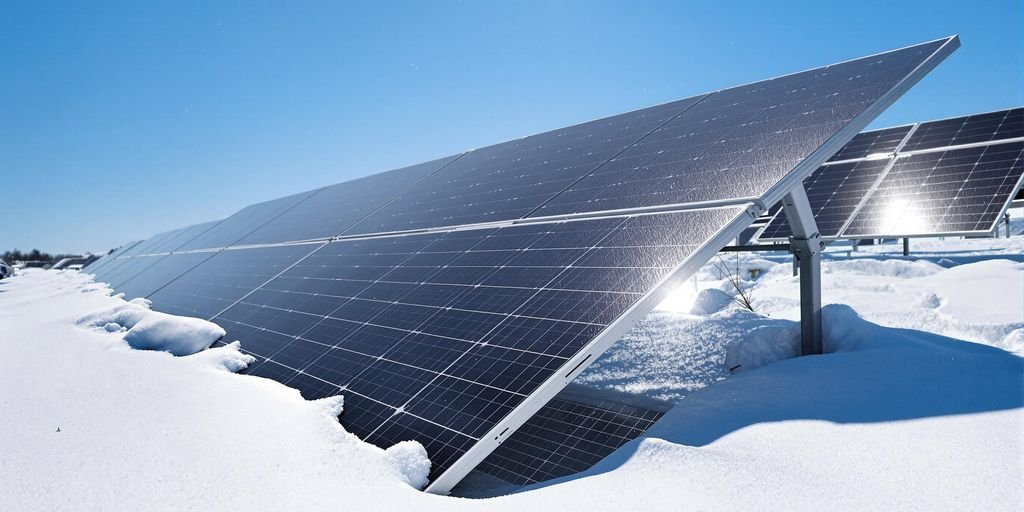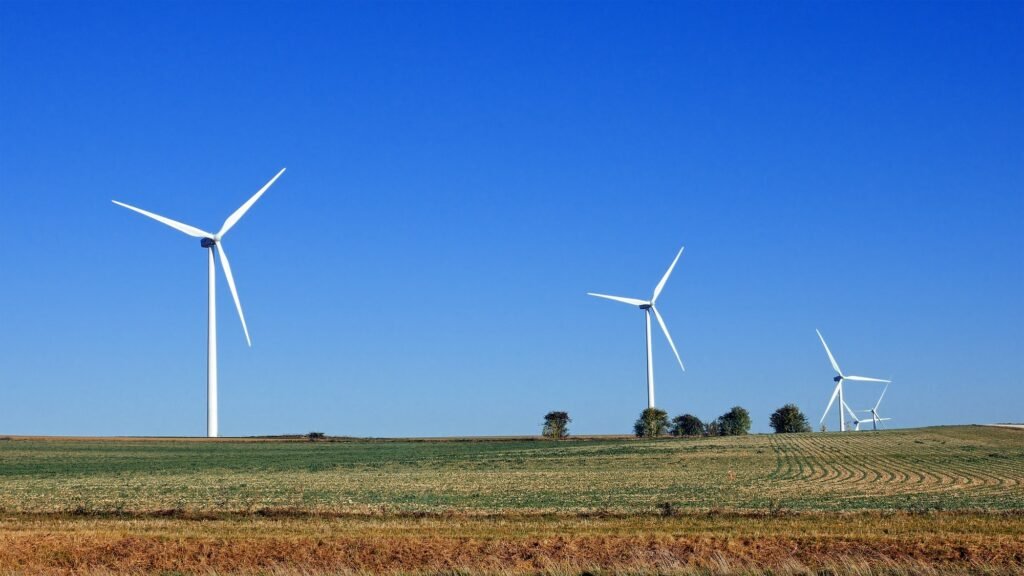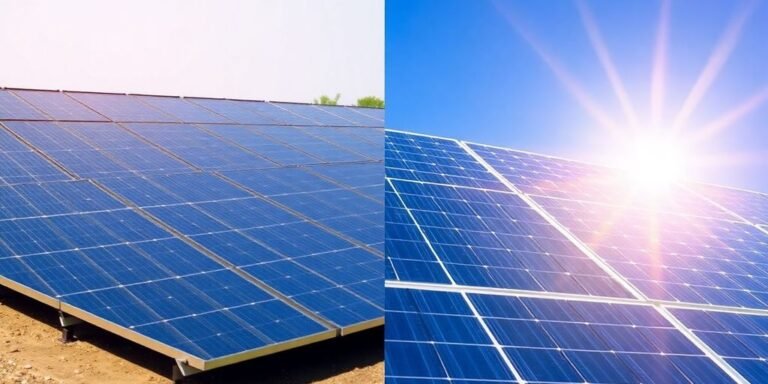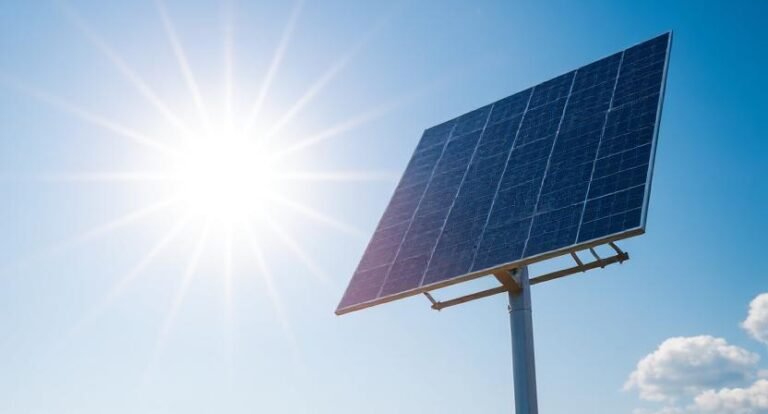Ever wonder if those solar panels on your roof are worth it in the winter months? With the cold, snow, and shorter days, you might think they’re just sitting there doing nothing. But surprise! Solar panels can perform quite well in winter. Let’s dive into how they manage to keep producing energy even when the temperature drops.
Key Takeaways
- Solar panels are more efficient in cold weather, so they can work better even if the days are shorter.
- Snow can help solar panels. It reflects more sunlight onto them, boosting energy production.
- Snow can cover panels and reduce output. But, it usually slides off due to the panel’s angle and smooth surface.
- Winter solar energy may be less than in summer. But, yearly production is still strong.
- Proper maintenance and smart installation can boost solar output in winter.
Understanding Solar Panel Efficiency in Winter

How cold weather affects solar panel performance.
You might think winter’s chill is a solar panel’s enemy, but it’s not. Cold weather can actually boost solar panel efficiency. This is because solar panels convert sunlight into electricity, not heat. Sunlight hits the photovoltaic cells.
This excites the silicon’s electrons. They start moving, creating an electric current. In colder temperatures, these electrons are at rest. When sunlight activates them, it creates a bigger voltage difference. This leads to better efficiency. However, shorter daylight hours and possible snow can reduce output.
The Role of Snow in Solar Energy Production
Snow might seem like a problem for solar panels, but it has a surprising upside. Snow on your panels acts like a mirror. It reflects extra sunlight onto them. This reflection can increase the amount of energy your system generates. But, of course, if the panels are completely covered, they cannot produce electricity.
Luckily, panels are usually mounted at an angle, which helps snow slide off. Plus, the panels absorb sunlight and heat up slightly, aiding in snow shedding. It’s generally not recommended to manually clear snow from the panels as it can damage them.
Maximizing solar output during shorter days.
Winter days are shorter, and the sun is lower in the sky, which can affect solar energy production. To maximize sunlight, adjust your panels’ angle to better catch the sun’s rays.
Proper angle adjustment can help optimize energy capture during these months. Also, keep the panels clean and free of debris.
This will ensure they operate at peak efficiency. Using a solar battery can also be a smart move to store excess energy for use during darker hours. Remember, while the output might dip in winter, the efficiency of the panels remains high.
The Science Behind Solar Panels in Cold Climates

Photovoltaic technology and temperature
You might think that solar panels need heat to work, but actually, they just need light. Cold weather can actually boost solar panel efficiency. When it’s cold, electrons in the solar cells are more at rest. When sunlight hits, it excites the electrons.
This creates a stronger electric current. So, there may be less daylight in winter. But, the panels can be more efficient at converting light to electricity. So, even if it’s freezing outside, as long as the sun is shining, your panels are working hard.
The Albedo Effect: Snow’s Reflective Benefits
Snow can be a real help for solar panels. When you have a layer of snow on the ground, it acts like a giant mirror, reflecting more sunlight onto the panels.
This is known as the albedo effect. It’s like getting a bonus boost of sunlight, which can help make up for the shorter days. So, while snow might seem like a nuisance, it can actually help your solar panels produce more energy.
Challenges of Snow Accumulation on Panels
Of course, snow isn’t all good news. If it piles up on the panels, it can block sunlight from reaching them. This is where you need to be careful. Heavy snow can also put stress on the panels, leading to potential damage.
Have a plan to remove snow safely. It must not scratch or crack your panels. Silicon-based solar panels are tough, but the freeze-thaw cycle can damage them. So, keeping them clear of snow is a good idea to maintain their efficiency.
Practical Tips for Maintaining Solar Panels in Winter

Safe Snow Removal Techniques
When snow piles up on your solar panels, it can block sunlight and reduce energy production. It’s tempting to just grab a broom and sweep it off, but hold on! Using the wrong tool can scratch your panels. You need a soft snow brush or a special tool made for solar panels.
Always check with your solar provider to ensure you’re not voiding any warranties. And remember, safety first—don’t put yourself in danger trying to clean them.
Preventing Ice Damage to Solar Panels
Ice can be tricky. It forms when snow melts and refreezes, and it can cause stress on your panels and mounting systems. To help prevent this, install your panels at the right angle. This will encourage snow to slide off.
Regular maintenance and inspections can catch issues before they worsen. Also, consider investing in a heating system for your panels if ice is a frequent issue in your area.
Optimizing Panel Angle for Winter Sunlight
The sun is lower in the sky during winter. So, adjusting your panels’ angle can make a big difference. Tilt your panels to catch as much sunlight as possible. If your system allows for it, adjust the tilt to a steeper angle in winter than in summer. This not only helps with energy capture but also encourages snow to slide off more easily. Always follow the manufacturer’s guidelines or consult a pro to avoid mishaps.
Winter can be tough on solar panels. But, with some effort and the right techniques, you can keep them running smoothly. Be proactive. Make small adjustments to handle the seasonal changes.
For tips on boosting solar panel efficiency in winter, see our guide on panel angle and maintenance.
Comparing Solar Energy Production Across Seasons

Seasonal Variations in Solar Output
Solar energy production can vary significantly between seasons. The sun’s angle and daylight hours change over the year. This affects how much energy solar panels can harness. In summer, longer days and a higher sun angle mean more sunlight. This, in turn, means more solar energy. Winter, in contrast, brings shorter days and a lower sun angle. This can reduce solar output.
| Season | Average Daylight Hours | Typical Solar Output |
| Winter | 8-10 hours | Lower |
| Spring | 10-12 hours | Moderate |
| Summer | 14-16 hours | Higher |
| Fall | 10-12 hours | Moderate |
Balancing Summer Surplus with Winter Needs
One of the interesting aspects of solar energy is how it balances out over the years. In summer, solar panels often produce a surplus of energy. It exceeds a household’s needs.
This excess energy can be stored or fed back into the grid, depending on your setup. In winter, production dips. Households can then use stored energy or grid electricity. This seasonal balancing act keeps solar power a viable energy source year-round.
- Store surplus energy in batteries for later use.
- Feed excess energy back to the grid and earn credits.
- Use grid electricity as a backup during low production periods.
Impact of Cloud Cover and Daylight Hours
Cloud cover and daylight hours are key factors in solar energy production. Solar panels can generate electricity on cloudy days. But, output is lower than on sunny days. In regions with frequent cloud cover, this can be a significant factor. Also, daylight varies with the seasons, as noted earlier. This affects a solar system’s total daily energy production.
Solar panels are designed to maximize efficiency. So, they are a reliable choice for sustainable energy, even in poor conditions. The key is understanding and planning for these natural fluctuations.
In conclusion, solar energy production fluctuates with the seasons. But, design and planning can reduce these effects. They can ensure a consistent energy supply year-round. Cold temperatures can boost solar panel performance. So, they work well in winter.
Economic Benefits of Solar Panels in Winter

Cost Savings Despite Reduced Output
Solar panels may produce less energy in winter. But, they still save money. Solar panels can work better in winter due to cooler temperatures. They perform better and convert more energy, even in snowy areas. So, your energy bills can still drop a lot, despite the lower solar output.
Long-Term Investment in Cold Regions
Investing in solar panels in colder regions can be a wise decision. Over time, the savings on energy bills can outweigh the initial costs of installation. Plus, solar panels last over 25 years. They can then provide financial benefits long after the initial investment is recouped.
Incentives for Winter Solar Installations
Many regions offer incentives for solar installations. These can be appealing in winter. These incentives can include tax credits, rebates, and other financial benefits. They make installing solar panels more affordable. Some programs offer incentives for winter installations. They encourage homeowners to use the colder months when demand is lower.
Installing solar panels in winter cuts energy costs and helps the planet. By using solar power, homeowners can save money and support renewables, even in winter.
Real-World Examples of Winter Solar Success

Case Studies from Cold Weather States
In some of the chilliest parts of the U.S., solar panels are proving their worth even when the mercury drops. Take Massachusetts and New York, for instance. Despite their snowy winters, these states rank among the top for solar installations. Modern solar panels can resist snow and ice. They work well in harsh winter conditions. They’re not just surviving; they’re thriving. Even in Alaska, solar panels help meet energy needs. This shows that, with the right setup, cold climates aren’t a barrier.
Innovative Solutions for Snowy Climates
In snowy regions, innovation is key to keeping solar panels productive. A clever approach is the albedo effect. Snow reflects sunlight onto solar panels, boosting their efficiency. Some systems are designed with steeper angles to help snow slide off more easily. Others use heating elements or special coatings to prevent snow accumulation. These adaptations let solar panels generate power, even when snow covers everything else.
Lessons Learned from Extreme Weather Conditions
Experience from extreme weather events has taught us a lot about solar resilience. In heavy snowfall areas, panels are often installed at angles that shed snow. This minimizes downtime. In storm-prone areas, people now often pair solar panels with battery systems. This setup keeps power during outages and makes the most of sunny winter days. It’s clear that with strategic planning, solar panels can be a reliable energy source year-round.
Winter doesn’t stop solar panels from doing their job. With the right tech and some creativity, they provide clean energy. This is true even in bad weather.
Addressing Common Myths About Winter Solar

Debunking the ‘Solar Doesn’t Work in Winter’ myth
You might’ve heard people say solar panels don’t do much in winter. Well, that’s not quite right. Solar panels are actually more efficient in colder temperatures. They work better because the photovoltaic cells don’t like getting too hot. So, even though the days are shorter and there’s less sun, the panels can still do a decent job. In places like New England, solar panels keep chugging along, even with all that snow.
Understanding Efficiency vs. Output
It’s important to know there’s a difference between efficiency and output. Efficiency is about how well the panels convert sunlight into electricity. In winter, panels might be more efficient due to the cold. But, with less sunlight, their output could still drop. Think of it like a car that gets great mileage but doesn’t go as far because the tank is smaller.
Clarifying Misconceptions About Snow and Ice
Snow and ice can be a bit of a problem, but not as much as you’d think. Snow can help. It reflects more sunlight onto the panels. This is due to the “albedo effect.” But, if snow covers the panels, they won’t work until it melts or slides off. Here’s a quick list of how snow affects solar panels:
- Light reflection: Snow can reflect sunlight onto the panels, boosting energy production.
- Weight and damage: Heavy snow can be risky if it weighs down on the panels.
- Snow shedding: Panels are usually tilted, so snow often slides off naturally.
In the end, solar panels can still be a smart choice in winter. They might not hit peak production, but they definitely don’t stop working. Whether you’re in sunny California or snowy Maine, solar panels can be a reliable energy source year-round.
Conclusion
So, do solar panels work in winter? Absolutely! Shorter days and snow can reduce sunlight on your panels. But the cold weather helps them run more efficiently. Snow can even boost performance by reflecting extra sunlight onto the panels.
Sure, you might see a dip in energy production, but it’s not as big as you might think. Plus, the energy you save in the sunnier months can help balance things out. So, if you’re considering solar, don’t let winter scare you off. It’s a solid investment all year round.
Frequently Asked Questions
Do solar panels work in winter?
Yes, solar panels can work well in winter. Cold temperatures can help them work better. There are fewer daylight hours and sometimes snow on the panels.
How do solar panels perform when they are covered with snow?
If snow covers solar panels, they can’t make electricity. But snow usually slides off easily. The panels are tilted and absorb sunlight, which helps melt the snow.
Should I clear the snow off my solar panels?
It’s not recommended to clear snow off your solar panels. Doing so might damage them, and they are often in hard-to-reach places. Snow usually melts or slides off on its own.
Why are solar panels more efficient in cold weather?
Solar panels work better in cold weather. They convert sunlight to electricity more efficiently when it’s cooler. They don’t need heat, just light, to generate power.
Do solar panels produce less energy in winter?
Yes, solar panels make less energy in winter because the days are shorter and the sun is lower in the sky. However, the yearly production loss is small, so they are still a good investment.
Can solar panels save money during the winter months?
In winter, sunlight is less. But solar panels can save money by cutting electricity bills. Over the long term, they are a smart investment, even in places with cold winters.
